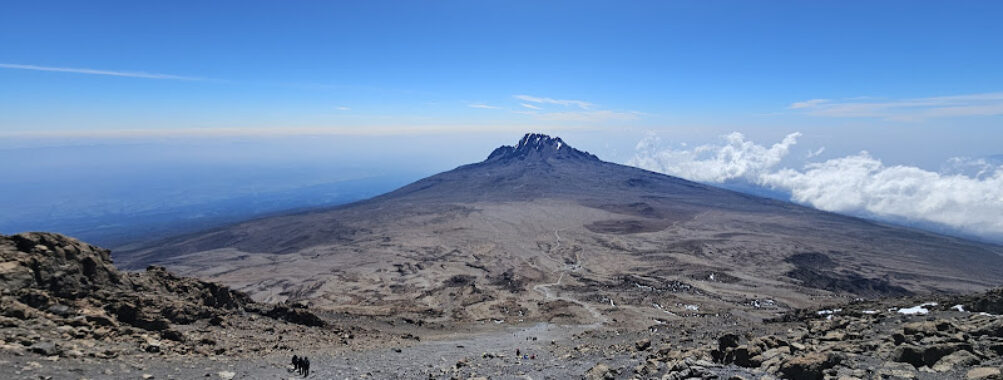
Mount Kilimanjaro National Park
Table of Contents
Description
Mount Kilimanjaro National Park is one of those rare places that manages to be both awe-inspiring and humbling at the same time. Sitting in northern Tanzania, it’s home to Africa’s tallest mountain — a free-standing giant that rises dramatically from the surrounding plains. The park isn’t just about the summit, though; it’s a living, breathing landscape filled with dense rainforests, alpine meadows, and otherworldly volcanic terrain. If you’ve ever wanted to walk through five climate zones in a single trip, this is where you can actually do it. And yes, it’s as surreal as it sounds.
There’s a certain magic here that’s hard to put into words. You might start your journey hearing the chatter of colobus monkeys in the forest and end it crunching across icy snow under a sky so clear it feels infinite. It’s not just for hardcore climbers either — the park offers plenty of lower-altitude treks, wildlife spotting, and cultural experiences with the Chagga people who’ve lived in the area for centuries. Families often find it surprisingly kid-friendly, especially if they stick to the gentler trails and guided tours. And even if you’re not aiming for the summit, just being in the shadow of Kilimanjaro is an adventure in itself.
Key Features
- Home to Mount Kilimanjaro, Africa’s highest peak at 5,895 meters (19,341 feet)
- Diverse ecosystems ranging from tropical rainforest to arctic summit
- Wildlife including elephants, buffalo, blue monkeys, and over 150 bird species
- Multiple trekking routes such as Marangu, Machame, Lemosho, and Rongai
- Cultural encounters with the Chagga community
- Opportunities for photography, from lush valleys to glacier landscapes
- Guided hikes for varying fitness levels, including family-friendly options
Best Time to Visit
While Kilimanjaro is technically climbable year-round, there are definitely sweet spots for weather and visibility. The two main trekking seasons are January to early March and June to October. These months usually bring clearer skies and more stable conditions, which is a big deal when you’re planning days of hiking. Personally, I think late September is a winner — the trails are a bit quieter, the weather’s still cooperative, and you can avoid the peak of the high-season crowds.
That said, the so-called “off-season” months like April, May, and November have their own charm. Sure, you might get more rain, but you’ll also get fewer people and a lush, green landscape that feels almost untouched. If you’re not chasing summit bragging rights and just want to soak in the park’s beauty, the rainy season can actually be a pretty magical time.
How to Get There
The easiest gateway to Mount Kilimanjaro National Park is Kilimanjaro International Airport (JRO), which has flights from major hubs like Nairobi, Addis Ababa, and Doha. From the airport, it’s about an hour’s drive to Moshi, the main base town for most treks. Arusha is another option — it’s a bit farther but offers more accommodation choices and safari connections if you’re planning to combine your trip with other parks.
Once you’re in Moshi or Arusha, local tour operators can arrange transport to the park gates. If you’re going solo (which I wouldn’t really recommend for a climb), there are buses and taxis, but most travelers go with a guided package that includes transfers. And here’s a tip from experience: don’t underestimate the value of a good driver who knows the back roads — it can save you hours if there’s traffic or roadwork.
Tips for Visiting
First off, don’t rush it. Whether you’re climbing to the summit or just exploring the lower slopes, giving yourself extra days to acclimatize will make the whole experience more enjoyable — and safer. Altitude sickness is no joke, and I’ve seen more than one overconfident hiker have to turn back because they pushed too fast.
Packing smart is key. Layered clothing is your best friend here because temperatures can swing wildly from hot and humid to freezing cold in a single day. And yes, bring a good pair of broken-in boots — this is not the place to test out new footwear. If you’re visiting with kids, stick to shorter trails and maybe consider a cultural tour with the Chagga people; it’s a great way to break up the hiking and keep them engaged.
Another thing most first-timers don’t realize: you can’t just wander into the park alone. A licensed guide is required for all treks, even the shorter ones. This is actually a plus — the guides are incredibly knowledgeable about the mountain’s history, wildlife, and geology, and they’ll often share stories you won’t find in any guidebook.
Finally, take time to simply look around. It’s easy to get caught up in “getting there” — the summit, the next camp, the next photo stop — but some of my favorite memories are from quiet moments: sipping tea while watching the sun dip behind the clouds, or spotting a rare bird in the forest when everyone else had their eyes on the trail. Kilimanjaro has a way of rewarding those who slow down and really see it.
Location
Places to Stay Near Mount Kilimanjaro National Park
Find and Book a Tour
Explore More Travel Guides
No reviews found! Be the first to review!